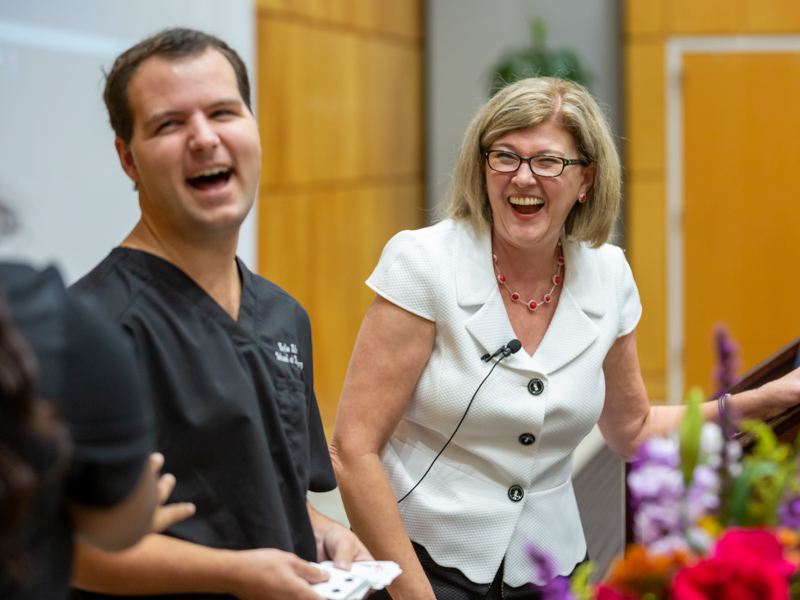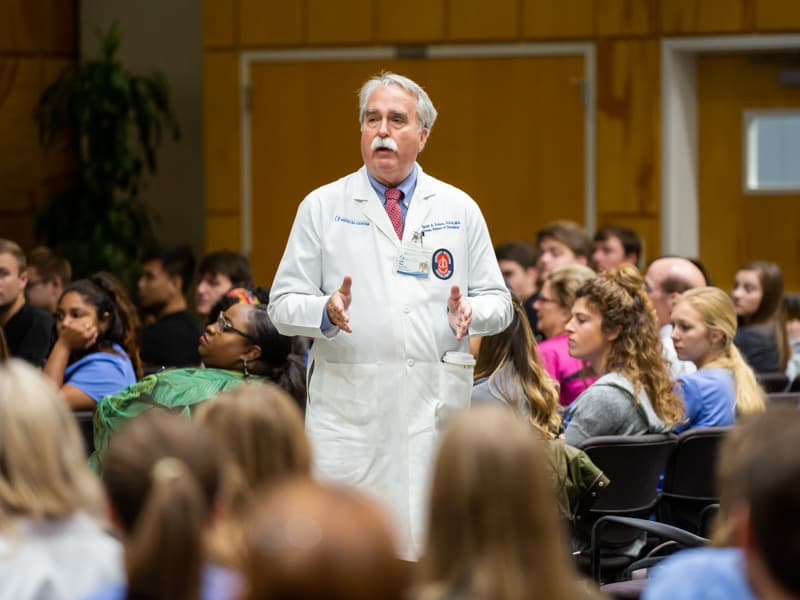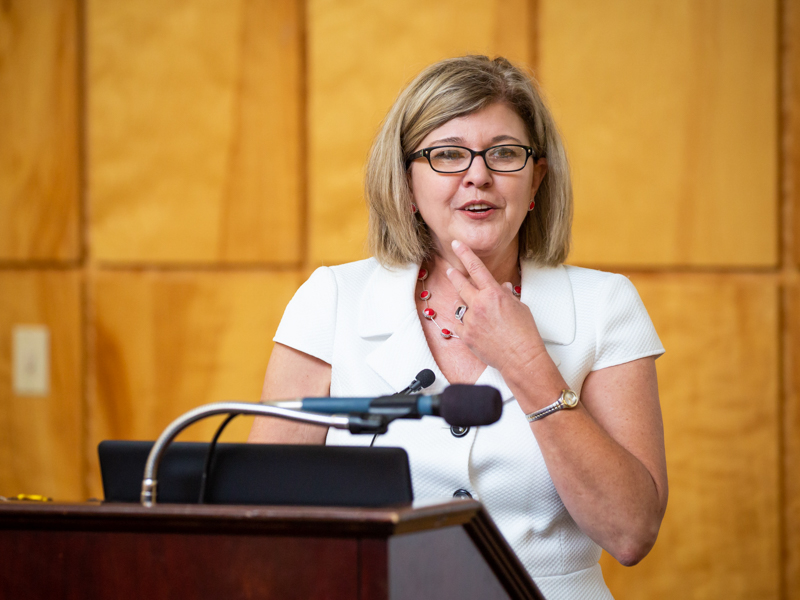From author’s dental pain comes promise of healing

Sonja Lauren was born poor in West Virginia to a dad she loved and an abusive mother who neglected her in every way.
Dental health didn’t figure into the family’s budget or her parents’ priorities. So, Sonja’s teeth decayed, from a very early age. She couldn’t escape any of her pain: abscessed and crumbling teeth that made misery her norm. Bullying from kids on the school bus who conspired to bring dental products from home to throw at her.
A bleeding ulcer by first grade because of the trauma of abuse. Her mother gave her peppermints and Rolaids to take the edge off the pain. Later in life, she’d learn that the Rolaids ate away the enamel on what was left of her teeth.
“Situation hopeless,” a dentist wrote on her chart after her parents, when she was in fourth grade, finally took her in. “I had mastered how to smile in a way that covered my tooth decay,” Lauren said.
She had more than one message for University of Mississippi School of Dentistry students who gathered Oct. 4 in the Student Union to hear her story. Chief among them: Children with severe dental decay shouldn’t have to suffer like she did.
And, she said, today’s dental students are the future servant leaders to make sure both children and adults get the often life-changing care they need.

“We as dentists in Mississippi have not stamped out tooth decay,” Dr. David Felton, professor and dean of the School of Dentistry, told a packed audience. “We haven’t done our due diligence.
“Thirty-one percent of Mississippi third-graders have untreated tooth decay. That’s on us.”
It should have been on all of the dentists and adults who for decades failed Lauren, who’s now in her mid-50s.
By the time she was 13, all of her teeth had been removed, at her parents’ insistence, by a dentist reluctant to take such a final step. It might not have happened so quickly, but Lauren was brutally kicked in the face on Thanksgiving Day. She was 12.
“My hiding place was under the couch. My face blew up, and I hid there.”
Her mother, she said, didn’t love her enough to rush her to a doctor or emergency room like most moms would have done. “She told me to take an aspirin and lay on a heating pad,” Lauren said.
After two dentists declared in their records that Lauren was “situation hopeless,” her parents finally took her to an oral surgeon. “He was screaming at my parents,” she said. “My mother was just … kind of there.”

“I kept saying, ‘There is no such thing as pain.’ I pinched myself to concentrate on that pain,” she said of gutting through the removal of her teeth. “When I came out of his office with my bag of gauze, my jaw was broken.
“My parents decided to go to McDonald’s. I just wanted to go home and hide under the couch. I changed the gauze in my mouth in the dark because I didn’t want to see the blood.”
Those long hours of suffering were the memories that prompted “Bleeding Alone,” a chapter in Lauren’s 2003 book, The Covered Smile. The book isn’t a classroom text for dental students, but it could be.
She carried sleeping pills in her purse as a teenager, ready for the moment when she couldn’t take it anymore. Every day, people judged her by her smile, or lack of one. After she got dentures in junior high, “I had two smiles: a fake one, and sometimes, a real one,” Lauren remembered.
At 24, a single mom with a 5-month-old, Lauren was meticulous in trying to save her baby from the same fate. “I would take gauze and clean her little teeth at night,” she remembered.
Years of abuse and bullying turned her in to “a porcupine mixed with junkyard dog,” which came in handy as her dentures went south with age. Then she found a dental surgeon at the Virginia Commonwealth University School of Dentistry undaunted by her physical and emotional damage.
He promised her the Cadillac of dentures, and delivered. He wasn’t focused on the cost. “I came here to help you get your life back,” she remembers him telling her. Two more caring and talented dental surgeons performed more work when she was 40.
She got her life back, working as a dental office business manager, certified ophthalmic assistant and professional speaker. Her daughter Angel, a dental assistant with anesthesia certification, is a married mom whose avocation is helping patients most in need. She’s the little girl in the illustration on the cover of her mom’s book.
Lauren pays it forward, and her message targets the dental students who not only can make a difference, but can change lives.
“People judge you by your smile. Your job is so much more important than the dental chair,” she said. “You can’t always do free dentistry, but you can get together as a team and do something. I’ve paid $90,000 out of pocket for dental services. For parents of children, it doesn’t have to be that way.”
How dentists talk to their patients makes all the difference, Lauren said. “They are looking to you for their needs to be met. They trust you. Your verbiage is so important when you tell them about their treatment plan.
“You have the power to change family traditions. When you help one generation, it carries down.”


